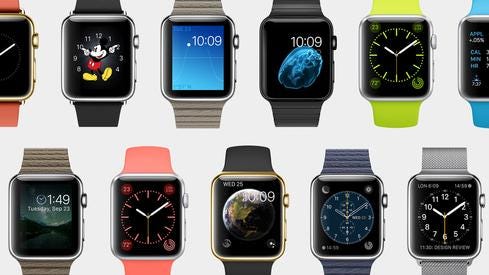iOS 8: What You Need To KnowiOS 8: What You Need To Know
Apple's latest mobile operating system, iOS 8, arrives on Wednesday. Here's how to prepare your iPhone or iPad.


Apple's Next Chapter: 10 Key Issues
Apple's Next Chapter: 10 Key Issues (Click image for larger view and slideshow.)
Apple will release iOS 8 to the general public on Wednesday at about 1:00 p.m. Eastern time. The improved operating system is compatible with a wide range of existing Apple products and adds an incredible array of new features to the platform. Once you've completed the update, however, not all the new features will work. So before you rush to upgrade, take these steps to protect yourself first.
Back up your iPhone or iPad before you do anything. Don't use iCloud. Plug it into your computer and save a backup to iTunes. This is essential and can resolve problems if the upgrade goes badly. Go one step further and make sure you've offloaded all your photos, videos, songs, movies, and any other files you want to be sure are safe. Don't take any chances.
The iOS 8 operating system requires about 1.4 GB of empty storage to install properly. Clearing out old photos and videos can help free up the necessary space.
iOS8 will be available for download over the air (via WiFi) or through iTunes. In both instances, be sure to have a cord ready so you can plug your device in during the install process. iOS 8 is compatible with the iPhone 4S, 5, 5c, and 5s; the iPad 2, iPad with Retina Display (also called iPad 3 and iPad 4), iPad Air, iPad Mini, iPad Mini with Retina Display; and the fifth-generation iPod Touch. (If you're still using an iPhone 4 or the original iPad, I'm afraid it's long past time for you to upgrade your hardware.)
[iPhone 6's near-field communications feature could do so much more. Read iPhone 6 NFC Radio: Limited Functionality.]
Apple will push the operating system to its servers at 1:00 p.m. Eastern time, but it might be a while before you're able to complete the update. Millions of eager iPhone and iPad owners will begin pinging the servers immediately. This can (and usually does) overwhelm Apple's systems. If you can't get through at first, try again in an hour or two. Be sure you have at least 30 to 60 minutes available for the OS to install fully. If your iPhone is your primary phone, be warned that it won't function during the install process.
There are two ways to install iOS 8: You can choose to "update" from iOS 7 and change only the necessary bits, or you can choose to "restore" your iPhone with iOS 8. Restoring erases the iPhone or iPad completely and imprints a clean image of the operating system. This gives you the best possible chance of a successful and bug-free install, but it requires that you re-load all your settings, apps, and content afterward.
After iOS 8 is safely installed on your device, you'll be able to enjoy some, but not all, of the operating system's benefits. Here's what will work:
The iOS 8 keyboard is dramatically improved over the iOS 7 keyboard. It adds a helpful new word prediction engine and includes an incredible array of new emoji. Perhaps best of all, iOS 8 supports third-party keyboards, such as Swype and SwiftKey (both of which will offer their keyboards to the iPhone and iPad later today). These apps bring swipe-typing to iOS for the first time.
The Photos app has been updated and offers new ways to organize and edit/share photos and videos. One of the most helpful features is that it lets you view only the videos you've shot, which are stored in an album all by themselves.
Spotlight and Multitasking have refined user interfaces and more features for controlling and interacting with your apps and content. The App Store and iTunes Store have also been tweaked in appearance. iOS 8 also adds in new privacy controls, iCloud Keychain, and hundreds of other little changes.
What won't work? Well, Continuity relies on having a Mac running Yosemite. Yosemite is available in beta right now, but it won't be released to the general public until October. Continuity will let iOS devices and Mac devices interact in some ways seamlessly, such as allowing users to start composing an email on one device and finish it on another.
Apple Pay, Apple's forthcoming mobile payment service, won't be available to most people either; the feature is limited to the iPhone 6 and 6 Plus and is scheduled to launch in October.
These tips should get you through the first few hours with iOS 8 on your iPhone and iPad. Good luck and happy updating!
Do you need a deeper leadership bench? Send your most promising leaders to our information Leadership Summit, Sept. 30 in New York City, for a day of peer learning and strategic speakers.
About the Author
You May Also Like






